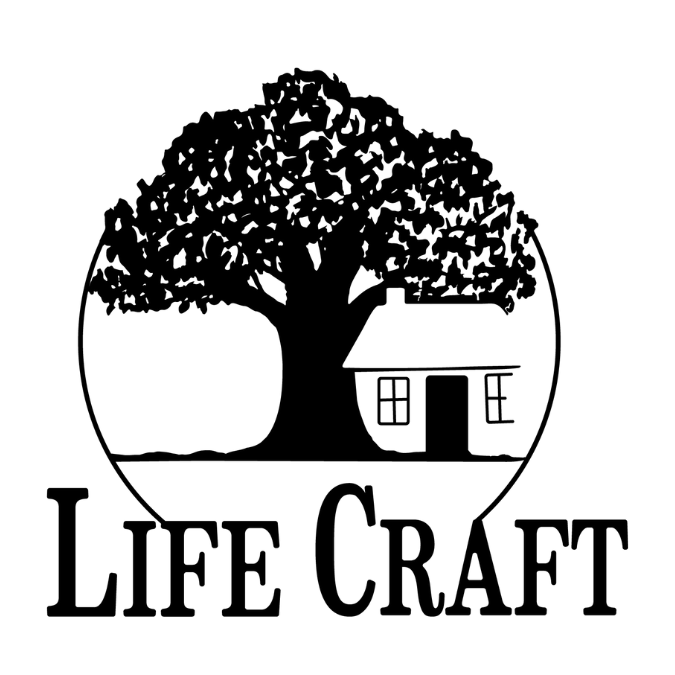Stewardship is using the natural world carefully so that it thrives and thus serves human life well. The natural world provides food, cloths, and shelter, each with its proper delight and beauty. It can also form our mind and character, teaching us basic lessons of life and human identity. The greatest gift of stewardship is in how we become ourselves through doing it—if we are humble, disciplined, and persevering.
Every home is where to begin, and so every home needs a plan. Here is a simple three-part stewardship plan for all: Conserve, Beautify, Fructify. We can start small, choosing a thing or two from the action steps in each area.
Stewardship Plan Part 1: Conserve
Conserve. Common sense tells us to conserve, even amidst plenty. It is shameful to waste, even if one’s personal resources seem unlimited. In reality, resources are always limited, and it is fitting to act accordingly—with an eye to the needs of others, and to the future.
This is not to be a skinflint. Conservation does not hinder proper abundance and overflow. On the contrary, real generosity, hospitality, and festivity sprout most in the soil of careful stewardship.
Action Steps for Conserve:
Water: Conserve water in washing and cleaning of all kinds; minimize disposable bottles for drinking.
Food: Obtain from sustainable sources; produce sustainably in the home.
Recycle: Practice recycling as appropriate (*deserves closer examination and study).
Electricity/Energy: Re-evaluate use in the home and take steps to conserve.
Disposables: Re-evaluate use of cheap things of all kinds, such as toys, tools, and entertainment gadgets. Consider quality substitutes.
Money/Wealth: Re-evaluate use of disposable income in view of the greater good of family, friends, and community.
Stewardship Plan Part 2: Beautify
Beautify. The human difference shines especially in our appreciation and making of beauty. Other animals are beautiful, do beautiful things, and are surrounded by beautiful things. But only we appreciate beauty, seek beauty, and make beauty.
Beauty begins in the home. We groom ourselves, decorate our homes, and craft all manner of beautiful things. Central to the beauty of the home is the intersection of house architecture, human actions, and the exterior, natural world. Even in a third-floor apartment there is a balcony and windows and plants.
Most homes have an associated plot of earth. How much it says about life when that plot is alive with beauty, ever so simple, cultivated by the loving, artful care of the human hand. Flowers have a beauty all their own; but they need planting, tending, and arranging. Well-spaced trees or shrubs, ground cover or stones, natives or imported ornamentals: these bespeak the presence of human persons who care and love. There is no ‘welcome’ sign like the living welcome of a natural space thoughtfully arranged. Here is hospitality and stewardship incarnate.
Action Steps for Beautify:
Beauty in the home: Make classic, tasteful beauty the norm in the home, in architecture and room arrangement. Decorate with great art, and natural things, especially the home-grown, including simple wildflowers, plants and grasses. Grow indoor plants.
Landscape: Make your corner of the world beautiful first by basic order and cleanliness. Then, learn the living habits of species of trees, plants, and flowers around you and cultivate them. Begin with one or two.
Stewardship Plan Part 3: Fructify
Fructify. The human difference comes through yet again in the shepherding of living things to bear fruit for human sustenance. Something blossoms deep within us, when we discover that we have a hand in making nature more abundant. It must be experienced to be known; we must do it, in order to receive this aspect of our humanity.
A trio of blueberry bushes is a stately presence of sweet abundance. The climbing cucumber vine, the potted tomatoes, the lovely sage plant can all thrive, carefully tucked in corners of patio or lawn. The proverbial ‘kitchen garden,’ so named from its bolstering even minimally the economy of the kitchen, is a monument to a natural order that binds man, plant, and earth in a generous and surprising web of life.
Action Steps for Fructify:
Patio herbs and vegetables: Start with one: maybe tomatoes, maybe a potted sage plant (makes a delicious and nutritious tea too!)
Edible landscaping: Research it. Some great examples: blueberry bushes; apple trees; a fig plant; raspberries or blackberries; herbs such as sage, rosemary, basil, and lavender. Start small.
Kitchen garden: Big or small, we can dedicate a patch to receiving a bounty that never ceases to amaze, even while it sometimes mystifies or disappoints. It’s all part of the experience. Again, start small.
Stewardship Plan: A Summary
Your feedback and suggestions are welcome.
Photo: Common Sage
Husband, father, and professor of Philosophy. LifeCraft springs from one conviction: there is an ancient wisdom about how to live the good life in our homes, with our families; and it is worth our time to hearken to it. Let’s rediscover it together. Learn more.





Well this is very good stuff! And it’s really applicable to everyone g, not just those who live on farms or have several acres. Even one I a condo/apartment can to some extent bring nature inside
The whole community is somewhat reminiscent of Rod Dreher’s “Crunch Con” thesis of some years ago
Many of us on the right have a dim view of environmentalism given what I believe to be its abuse from the left, but by the same token that doesn’t ran that we should go in the other direction.
It’s been said that environmentalism is saving the earth from people while conservation is saving it for people. Perhaps too simple but a point there. Either way, I agree with your observations and prescriptions, professor.
Tom, I really appreciate this. I completely agree that conservatives too often allow themselves to be pushed away from taking care of the environment, in response to the initiatives of radical environmentalists. In this, as in so many things, we need to be able to hold the ‘center.’ There is a proper stewardship, or conservation–as you note. Thanks again.
John,
A rich piece once again, and full of practical advice. I love how you address the usual objection to careful stewardship (“Why should I have to live like a miser!?”):
“This is not to be a skinflint. Conservation does not hinder proper abundance and overflow. On the contrary, real generosity, hospitality, and festivity sprout most in the soil of careful stewardship.“
One way that we have found to practice better stewardship is through the simple act of composting. It’s amazing how much free fertilizer we used to throw away.
Now eggshells, banana peels, veggie scraps and coffee grounds all go into a pile in the backyard instead of the trash. Even after just a few months, I dug through the pile and was astounded at how dark the soil had become. The abundance of bugs and worms doing their part was an encouraging sight as well. Our garden will reap the benefits next year, and our trash can is lighter (and less smelly) each week because of it.
Josh, Amen to composting! What a gift it is–so many things working together for the good. And yes, thank you for your emphasis abundance going hand in hand with conservation–another one of those great paradoxes.